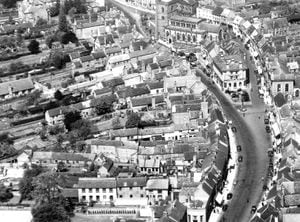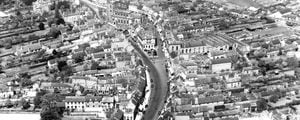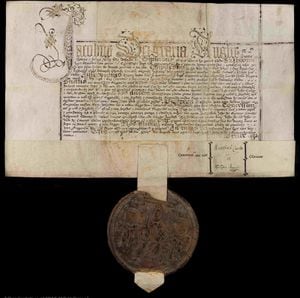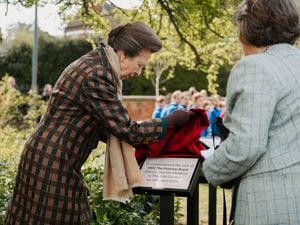A very bad deed which left a hole in Newport's history
They didn't pay Francis Staunton. But he got his own back – by making off with some of the town deeds.

And partly due to him there's a hole in Newport's history, with original documents missing.
But at least now a modern research project, which is part of the writing of a new and definitive history of the town, is helping to fill in the blanks, particularly in regard to Newport's royal charters, which conferred certain rights and privileges.
Linda Fletcher of Newport History Society is helping to co-ordinate the project.
She said:"Dr Judith Everard has been looking at the charters for our revised history of Newport. She is one of the main historians writing for the Victoria County History (Shropshire) and did a full report funded by Shropshire Archaeological and Historical Society.
"There is not much in the way of royal charters relating to Newport but she has put them together and written a full report, which is very definitive."

The work, a joint venture between the society and VCH, tells how Newport was founded by Henry I, the son of William the Conqueror, which means it dates from before 1135 – that's when Henry died.
However, there was probably no foundation charter as such as the establishment of a town by the king at that time did not need a formal document.
"The earliest known charter of Newport is by Henry II, the grandson. He ordered the sheriff of Shropshire to protect the burgesses' freedoms and rights just as they were during the reign of his grandfather."
Burgesses were literally the residents of a medieval town, or "burgus."
"Our town was at first called 'Novus burgus,' meaning 'new borough.' More particularly the burgesses were the holders of the long narrow plots known as burgages, and this tenure brought with it freedoms from a range of payments and services due to the lord of the manor, but it also had responsibilities to their town.
"Many of the burgage plots survive today."

In 1227 a royal charter gave the manors of Newport and Edgmond to Henry de Audley. He was the sheriff of Shropshire, but the monarch dictated some of the town's features. The charter was confirmed by Edward II, who stayed in Newport in 1322.
In 1298 and 1356 the king gave the burgesses the right to collect money for three years from visiting merchants and travellers to pay for paving – it would have been similar to cobbled pavements – in the town.
The 1322 charter was confirmed by successive monarchs, keeping alive the burgesses' various freedoms and rights.
"These royal charters were still in existence in 1648 and were kept by Newport burgesses. They have since vanished, along with dozens of original deeds belonging to the town of which we now have only copies.
"Francis Staunton, innkeeper of The Swan and the town bailiff, wasn't paid for repairing the pavements of the town in the 1760s and made off with some of the town deeds, something like the Pied Piper of Hamelin.
"There is only one original surviving royal charter. This is the 1604 charter of James I. This is held by Shropshire Archives."






